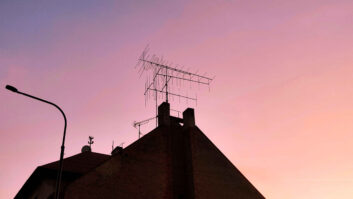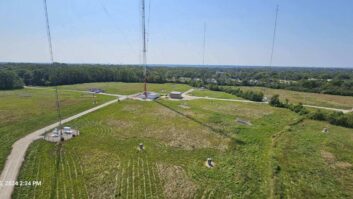We strongly support Cris Alexander’s comments in Radio World (“Our ‘Last Best Chance’ to Revitalize AM,” Jan. 8 issue), especially his clear message that this is the last real opportunity to enhance the current AM radio service.

credit: iStockphoto/ryccio Unfortunately, we note that most commentary from the industry (and most of the comments that have been filed with the commission) to date are largely focused on FM translators and not on the primary issue of revitalizing the existing AM band.
FM translators are at best a stopgap measure for AM operators. This is not a time for moving the deck chairs on the Titanic, but instead it is necessary to rethink and revitalize our proven senior radio band. We are not dealing with the short term (decade or less technical fads, such as video rental stores or 8-track tapes). Instead, we represent an industry that has a tradition of 100 years of service to the country, and more specifically, the local communities that we serve.
We strongly support the proposal to raise the overall level of signal intensity for AM service to a minimum of 2 mV/m. However, like so many things in radio engineering, the devil is in the details.
With regard to the proposal, note that of approximately 5,000 AM radio stations in this country, approximately one-fifth or 988 stations, operate on the six Class C channels (1230, 1240, 1340, 1400, 1450 and 1490 kHz).
Further, under current regulations, the Class C stations are limited to a maximum daytime power of 1 kW — as outlined in the newly proposed R&O, the power limit would remain 1 kW day and night. Were a proposed 2 mV/m contour signal level to be adopted, Class C stations would fall even farther into the abyss of the interference and make them less relevant in their market.
In order for Class C stations to stay on parity with Class B and D facilities during daytime power levels, these Class C stations will need to have the option to increase power to 4 kW — since they are now normally only protected to the 1 mV/m at current daytime power levels.
This proposal (to upgrade Class C licenses to a minimum service level of 2 mV/m) would not necessarily enlarge coverage area, but level the playing field with other regional AM stations, and more importantly, attempt to address all the undeniable interference from power lines, Part 15 devices, fluorescent lights and every other imaginable radiator!
Furthermore, all licensed stations should be provided with the option in a near-term special filing window to relocate within the AM band to any optimum channel based on channel availability under the proposed Section 73.37 separation criteria. The adoption of these new standards is the perfect opportunity for any station owner to reallocate within the AM band. This will provide local market stations with an opportunity to better utilize existing spectrum made available by either the reduced protection requirements and/or through relocation to channels previously vacated by deleted facilities.
It ought to be noted that there currently exists a similar provision for low-powered FM facilities which allows LPFM stations to change to any available FM channel as a minor change if their operation incurs interference. We see no reason that licensed commercial broadcasters should be treated with less consideration than noncommercial broadcasters.
In closing, we believe that there are clearly some opportunities to breathe new life into the AM band. In order to take advantage of these proposed rules, broadcasters will need to have the flexibility and technical tools to capitalize on these opportunities. This is our reaction after having read and carefully considered the full ramifications of the commission’s current R&O. Admittedly, we speak as owners of multiple Class C stations owners — yet since Class C stations represent almost 20 percent of all AM licenses, it is hard to imagine a comprehensive AM revitalization without any real consideration of Class C stations (beyond simulcasting via FM translators).
Michael Afflerbach is a partner in CTC Media Group and is located in New Bern, N.C. He is responsible for the day-to-day management and operations of AM stations WNOS 1450 AM (with translator W298BX), WWNB 1490 AM (with translator W280ED) in New Bern, N.C. and WECU 1570 AM in Winterville, N.C. Along with his father, Lee Afflerbach, Michael also works with clients on broadcast and wireless consulting projects.







